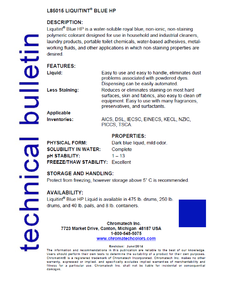Yeh - Water Wetter tends to leave a film on everything which shows up on translucent components - possibly due to the silicone oils that are supposedly in its mixture. Also it smells pretty bad when it has been in your loop for a while...!
Dissimilar metals are always an issue for us. While we can certainly take steps to minimise the problem, it will always be an issue to some degree. Take for instance a typical copper rad. While the internals are primarily copper - The solder which seals the rad components contains lead and tin....so already we have introduced different metals in our system.
Dissimilar metals are always an issue for us. While we can certainly take steps to minimise the problem, it will always be an issue to some degree. Take for instance a typical copper rad. While the internals are primarily copper - The solder which seals the rad components contains lead and tin....so already we have introduced different metals in our system.

 your taking my spot of Guiney pig away.
your taking my spot of Guiney pig away.  Not that it will stop me from doing my own tests when I get the time.
Not that it will stop me from doing my own tests when I get the time.
